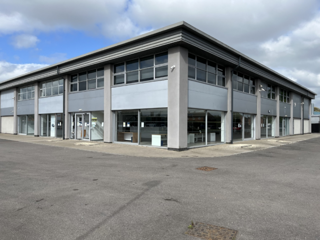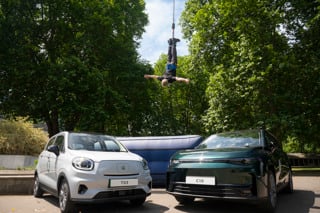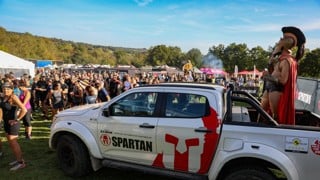Car dealership sites are set to undergo a major transformation over the next decade.
As customers are increasingly turning to (and are able to) complete more of their purchase journey online, there will be less need for face-to-face interaction with sales and reception staff.
Yet, they will still have to take their cars in for servicing and repairs, particularly with the advent of electric vehicles (EVs) where specialist diagnostics and equipment are required.
“From a servicing perspective, dealers will still need to offer all that kind of high-tech stuff,” says Tim Smith, chief commercial officer at GForces.
“And the big service centres continue to be built out of town on lower-cost land, especially for multi-franchise operations.”
OMNICHANNEL INFLUENCE
As a result of this greater omni-channel approach, however, dealer sites will become much smaller, with a centralised hub for vehicle sales and delivery to achieve economies of scale and efficiency, especially in areas such as administration.
Dealers will also have to do more with less space, with a bigger focus on using showrooms to sell the brand experience rather than displaying the physical stock.
“In line with other retail sectors, physical retail will remain an intrinsic part of the offer, but the focus will change from point-of-sale to a holistic exploration of brand ethos/culture,” says Richard Adams, director at future strategists Accendia Consulting.
“This will manifest itself in product and technology showcasing to promote brand engagement, choice valuation, test drive experiences and other fulfilment services.”
Workshops will also become more streamlined, with multiple brands sharing the same site to drive efficiency and mobile servicing more widespread.
There will continue to be further divergence between sales and aftersales, particularly in high-cost urban locations.
“Increasingly, customers can now do so much more on the computer than before, yet they still want to maintain that physical interaction with the car and real people,” says Mike Jones, until recently the chairman of ASE Global.
“There will always be some people who want to buy purely online and retailers can facilitate that, but that doesn’t mean the showroom will disappear overnight.
“The industry is going to go through a huge change in the next 10 years as it moves towards electrification and, in order to take consumers with them, dealers will play a key role in guiding them on that journey. Therefore, I don’t foresee motor retail sites going away anytime soon.”
The size of the site and facilities, however, will still continue to be dictated to an extent by individual dealer’s franchise agreements, says Jones. But, he adds that brands will also increasingly move towards a hub-and-spoke model with more local servicing and multi-franchising.
Another factor by which dealers are bound, says Jones, is the existing buildings and leases on sites. Yet they still have the scope to make modifications to their layout, including the introduction of drive-through service lanes, as in the case of JLR Arch, he says.
COST-EFFECTIVE PROPERTY
One given, however, is that showroom sizes are diminishing, for example at Volkswagen, where they will be significantly smaller under its future roadmap, says Jones.
That’s due, in part, to the wider use of virtual reality and configurators, negating the need for the customer to be physically present to test or select the car, he says.
Greater digital engagement will also reduce the need for sales functions in prominent and high-cost locations. Servicing operations can be undertaken in ‘grey box’ facilities that leverage the efficiencies of multi-branding and extended service hours too.
“Accessibility and cost will be more important than prominence of location as we migrate to future retail models,” says Simon van Oppen, consultant at RS & Co and former group property manager at Volkswagen Group.
“In high land value locations, mezzanines can be constructed in high bay industrial units to replicate the traditional low densities of development required by the retail automotive sector.”
Future retailing will also become more diverse, with the adoption of a range of physical touchpoints to meet local customer requirements. However, the density of retail representation will be much lower, with investment targeted more at regional locations which emphasise brand ethos and culture, split between high visitor traffic sites where customers can browse at leisure and specific destination locations which focus on experiential physical engagement and test drives.
“While there will be fewer dealership sites than before, many of them will become much more immersive in the kind of experience they offer,” says Smith.
“They will use technology as an enabling tool to achieve this through the adoption of showroom displays, multi-media screens and touchpads that allow the customer to immerse themselves fully in the brand and feel the emotion of driving or owning the vehicle.”
Author: Alex Wright



















Login to comment
Comments
No comments have been made yet.